Station 2: Where did the Bible come from?
Questions to Answer
- What is canonization? Who decided which books go into the OT? And the NT?
- What about translation? Do some things get lost in translation? Are some translations better than others?
- What about chapters and verses?
- How do we know that we have the right words that were actually spoken by Christ?
Presentation
St Pishoy classroom will be converted into "The Museum of Biblical History" with three exhibits. The presenting servant will be a museum tour guide who will conduct a tour of the museum's exhibits.
Exhibit 1 - Canonization
- What is the Bible?
- The Inspired Word of God
- Station 1 Covers Inspiration and what it is
- How do we know which books or letters or scrolls are inspired by God? This is through a process called Canonization
- Canonization comes from the Greek κᾰνών meaning "rule" - it refers to the Biblical Canon which is the list of books considered to be inspired by God
- Canonization happens in three steps:
- The Events Happen
- Abraham lived in 1800 BC and there are many stories from his life
- These stories are preserved in an oral tradition and passed down from generation to generation
- The Events are Written Down
- Moses lived in 1250 BC and he wrote down the stories of Abraham in the Book of Genesis
- But these books were not considered "The Word of God" or "Canonical" or "Inspired" until much later
- The Writings are Considered Scripture
- During the Babylonian Exile (~500 BC), the Jews started to read the writings of the Torah and turned to them as much more important. They had lost their Temple, their city, their land - so they turned to the Torah for comfort. They started to see the writings as holy and sacred Scripture.
- When they returned from Captivity (~400 BC), they considered these writings to be the word of God.
- The Events Happen
- Canonization of Scripture
- This exhibit will be at the white-board side of St Pishoy, so it would be good to use the whiteboard to diagram out the timeline of Canonization while speaking to some points
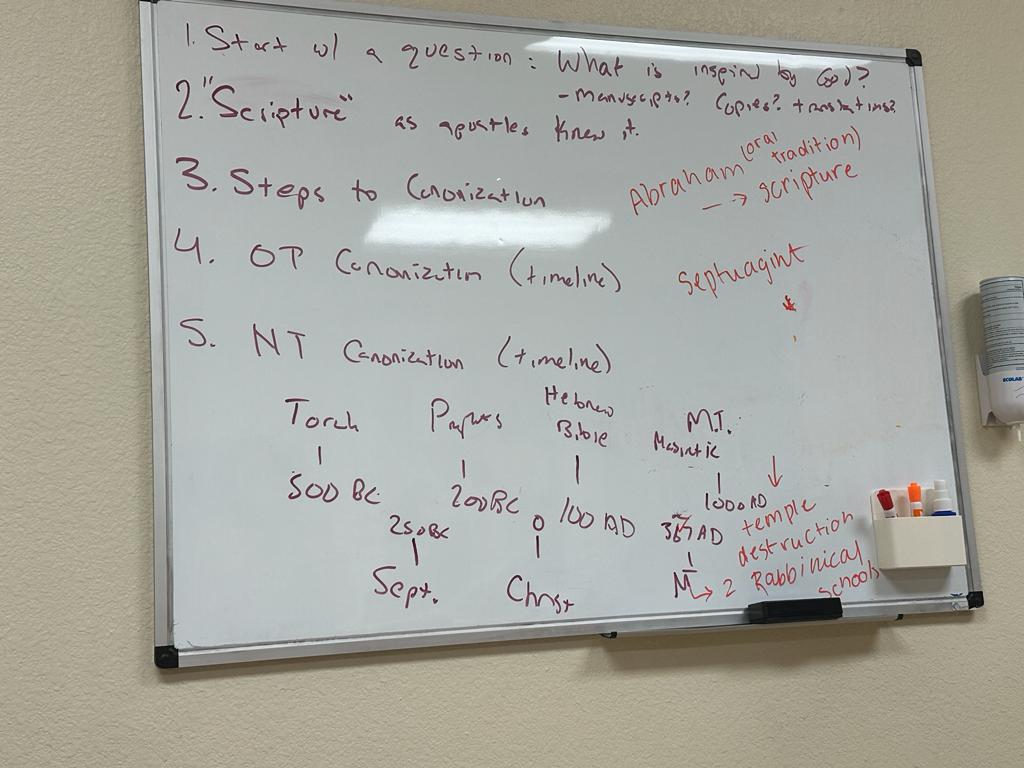
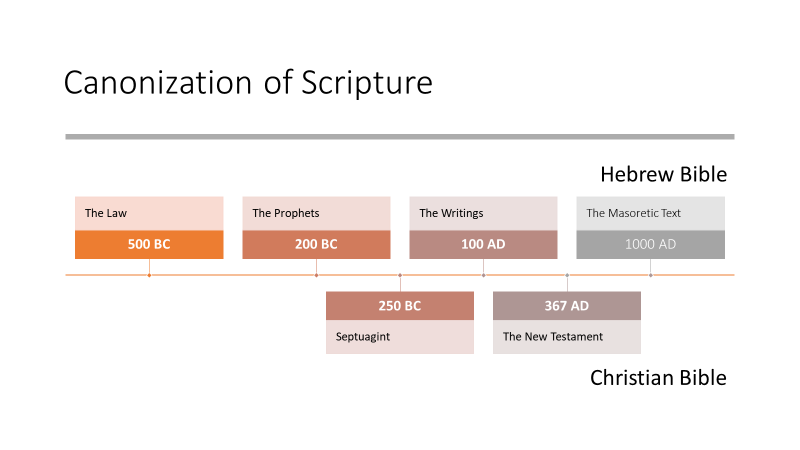
- We have to examine Canonization of the OT separately from the NT
-
Tanakh
-
TaNaKh is the name of the Hebrew Bible
-
It comes from three words “TNK” – “Torah – Nevi’im – Ketuvim” – “Law Prophets Writings”
-
The Torah or the Law is the five books of Moses – Genesis, Exodus, Leviticus, Numbers, Deuteronomy
-
The Nevi’im is eight books – Joshua, Judges, Samuel, Kings, Isaiah, Jeremiah, Ezekiel, The Twelve
-
The Writings is basically everything else
-
-
Scholars and academics believe that the Torah was canonized during the Babylonian Exile and the Prophets AFTER the Babylonian Exile
-
We know that at the time of the Lord Jesus Christ, throughout the Gospels, what is mentioned is “The Law and the Prophets” – so this is what they considered Scripture. The Pharisees did. The Sadducees and the Samaritans did not believe the Prophets to be Scripture
-
The last part of the Hebrew Bible (the Ketuvim or the Writings) was not considered to be Sacred until well after the time of the Lord Jesus Christ. In 70 AD, the Temple was destroyed, the system of ritual sacrifice was gone, the Sadducees were gone, and all that was left was the Synagogues and the Pharisees. The Jews are now in contention with the Christians and will reject anything that seems “Christian” – including the Septuagint. So they decide by consensus which books of the Ketuvim (Writings) are inspired, they took out what they could from what the Christians were using (to separate and differentiate themselves from the Christians), and they closed the canon of the Hebrew Bible.
-
What was being canonized here were Hebrew Texts and the Hebrew in them was an ancient Hebrew Alphabet (called Paleo-Hebrew) that only had consonants, no vowels. In Hebrew, vowels are indicated by diacritical marks (tashkeel). And so sometimes there is some ambiguity. The reason this is important is because around 1000 AD, a new version of the Hebrew Bible was born. It is called the Masoretic Text. It was written by a group of scribes and Torah scholars who worked in the Middle East between the 7th and 11th Centuries. So we can date the Masoretic Text to about 1000 AD.
-
- Masoretic Text
-
The Masoretes took the Hebrew Bible that they had, represented by many different scrolls and manuscripts, and they wanted to standardize the Hebrew Bible. So they made several changes. Among them:
-
They added vowel points (or tashkeel)
-
This can completely change the meaning of something, and this standardizes the interpretation that was formerly not standardized
-
CT can be “cat” – “cut” – “cot” – “city” – “cute” – “cite”
-
There was a certain level of ambiguity in the original text of the Old Testament, which left some passages up to interpretation
-
The Masoretes INVENTED a system of diacritics that they could use to indicate vowels and they used it to standardize the interpretation of the Hebrew Scripture
-
-
They included some changes based on an anti-Christian bias
-
Who would give them the authority to make changes?
-
How would anyone allow them to make changes?
-
Imagine if you have several sources in front of you and some of them have mistakes or differences from each other. Which one would the Masoretes pick? The one that the Christians are using? Or the other one?
-
So they would simply pick the one that is not used by Christians and claim that is what the manuscripts say.
-
-
This is the text that is currently used by the Jews for the Hebrew Bible; and it is also the text that Martin Luther decided to use when he split from the Catholic Church. All Protestant Bibles are based on the Masoretic Text.
-
- The Septuagint
-
We, however, use the Septuagint for our Old Testament. The word Septuagint means “70” and refers to the 70 who were commissioned by Ptolemy of Egypt to translate the Hebrew Scripture into Greek in the 3rd Century BC. We use the Septuagint because:
-
It is what the Lord Jesus used and quoted from; as well as the apostles
-
It is from before Christ, and thus it is free from anti-Christian bias
-
It is what the Church has used since the beginning
-
-
The Septuagint includes the books that were removed by the Jews later on – Tobit, Judith, Baruch, etc. The Septuagint is written in Greek.
-
So from the beginning of the Church, it is known to us what the Old Testament Canon is. It is what is represented by the Septuagint.
-
- The New Testament
- The New Testament underwent a completely different process to canonization.
- At first, there was no need to make a New Testament or to canonize any specific writings – the Church had a lectionary and was using specific books in the Liturgy. No one had their own Bible at home, it was very rare for anyone to even have one book of the Bible in their home. The Church did not have a complete Bible – might have had some books or epistles. But the Scripture was read in the context of the Lectionary.
- The New Testament books were considered inspired by each Church based on what was passed down to them
- If we wanted to give a date, we would give the date of 367 AD – this is the year that St Athanasius sent a Festal Encyclical on Easter and took the opportunity to list the Books of the Scripture and he listed the 27 Books of the New Testament that we use today. He was not SETTING the Canon, but rather he was telling to his Church what the Canon is and what is agreed upon by the Church as a whole.
- The New Testament underwent a completely different process to canonization.
Exhibit 2 - Biblical Manuscripts
Visual Aid
- We will have printouts of the following manuscripts (in reverse order of how old they are):
- Masoretic Text (Codex Leningradensis)
- Four Great Uncials (Codex Vaticanus, Codex Sinaiticus, Codex Alexandrinus, Codex Ephraemi Rescriptus)
- Bodmer Papyri
- Chester Beatty Papyri
- Magdalen Fragments
- Oxyrhynchus Papyri
- Rylands Papyrus
- Nash Papyrus
- Dead Sea Scrolls
- Each of the Manuscripts will have a card as a label for it to give quick info and a QR Code to more info
- We will have the the following as posters:
Topics of Discussion
- Introduce the station by talking about the posters
- Poster 1a: There are a lot of manuscripts of the Bible. A LOT. Let's take a look at the Old Testament first. In the Old Testament, we have 42,300 Manuscripts that we have found so far, of the Old Testament. And for the New Testament we have 23,986. The reason that the Old Testament has more, despite being older, is obvious - first because it is older, so has been around for longer, there are more copies, etc. And second because it is preserved by Jews and Christians!
- Poster 1b: This chart shows all the languages that these New Testament manuscripts are found in and obviously those are all translations of the original. Because the original was in Greek. So if we take just that Greek number - the number of manuscripts of the New Testament in its original language, it's 5,856. How does that compare with manuscripts of other historical documents?
- Poster 2: The fact is that we have more manuscripts for the New Testament than any other ancient document. The other fact is that our closest manuscripts are from only 30 years after the original.
- If you compare with Homer's Iliad, for example - it has a lot of manuscripts, but the earliest one is 400 years after the original. Or something like Tacitus' Annals we have very few manuscripts and the earliest one is 750 years after the original.
- Poster 3: But we also have tens of thousands of Patristic references to the New Testament which are all within the first Century after Christ from all around the world - and none of them disagree with the text of the New Testament. Justin Martyr lived in Rome, Irenaeus in Asia Minor, Clement and Origen in Alexandria, Tertullian in northern Africa, Hippolytus in Rome, Eusebius in Caesarea
- So what do these Manuscripts look like? Today you will have a chance to see and feel them. We'll look at them from the newest to the oldest.
- The Masoretic Text
- Language: Hebrew
- Date: 11th Century AD
- Format: 491 Pages on Vellum Parchment (i.e. animal skins)
- Contents: The Hebrew Bible (TaNaKh)
- Naming: Written by the Masoretes (group of Jewish scholars between 7th and 11th Centuries)
- More Info:
- Represented by two major manuscripts: Codex Leningradensis and Codex Aleppo
- Codex Leningradensis is the oldest complete manuscript of the Masoretic Text and lives in St Petersburg in Russia.
- The Masoretic Text was composed in the 9th Century and is the Hebrew Bible that is used for most Protestant Translations of the Old Testament.
- The Masoretic Text is in Hebrew, and very notably it was the first time that vowels, pronunciation and stress accents were added to the Hebrew Bible in the form of Diacritic Markings (tashkeel).
- Orthodox Christians do not use the Masoretic Text, but we use the Septuagint because:
- That is the translation of the Old Testament that was used and quoted by Christ and the Apostles
- It is over 1,000 years older than the Masoretic Text
- The Masoretic Text was made by Jews AFTER Christ and added interpretations to Hebrew words that may have not been there before
- https://en.wikipedia.org/wiki/Masoretic_Text
- Digitized: https://archive.org/details/Leningrad_Codex/mode/2up
- The Great Uncials
- Uncial is a majuscule script - written entirely in capital letters (common in 4th-8th centuries CE)
- Scriptio Continua - words without any spaces between them
- Codex Vaticanus
- Language: Greek
- Date: 4th Century AD
- Format: 759 Leaves on Vellum Parchment
- Contents: Old and New Testament
- Naming: Kept in the Vatican Library
- More Info:
- Uses the oldest system of textual divisions in the Gospels.
- The oldest extant manuscript of the Greek Bible (Old and New Testament).
- The Codex is named after its place of conservation in the Vatican Library, where it has been kept since at least the 15th century.
- It is written on 759 leaves of vellum in uncial letters and has been dated paleographically to the 4th century.
- The manuscript became known to Western scholars because of correspondence between Erasmus and the prefects of the Vatican Library
- Uses the oldest system of textual divisions in the Gospels.
- https://en.wikipedia.org/wiki/Codex_Vaticanus
- Digitized: https://digi.vatlib.it/view/MSS_Vat.gr.1209
- Codex Sinaiticus
- Language: Greek
- Date: 4th Century
- Format: 347 leaves on vellum parchment
- Contents: Entire Greek OT and NT, Epistle of Barnabas, Shepherd of Hermas
- Naming: Preserved in St Catherine Monastery, Mount Sinai
- More Info:
- Written in the 4th Century, oldest surviving complete New Testament and one of the two oldest manuscripts of the whole Bible
- It also stands out as a complex and beautiful artefact. It is one of the most important texts for studying ancient Greek translations of the "Hebrew Bible", and for the study of the New Testament and the two other early Christian writings it contains, the "Epistle of Barnabas" and the "Shepherd of Hermas.”
- Scriptio Continua
- There are no spaces between the words or paragraphs. It is continuous text in all uppercase letters.
- Includes entire Greek Old and New Testament as well as Epistle of Barnabas and Shepherd of Hermas
- Preserved for centuries in St Catherine's Monastery on Mount Sinai
- Complex and beautiful artifact: one of the most important texts for studying ancient Greek translations of the Hebrew Bible, and for the study of the New Testament
- https://en.wikipedia.org/wiki/Codex_Sinaiticus
- Digitized: https://www.bl.uk/manuscripts/Viewer.aspx?ref=add_ms_43725_f001r
- Codex Alexandrinus
- Language: Greek
- Date: 5th Century AD
- Format: 773 leaves on vellum parchment
- Contents: Entire Greek OT and NT, 1 Clement, 2 Clement
- Naming: Originated in Alexandria
- More Info:
- The most valuable Greek manuscript of the Old and New Testaments, so named because it was brought to Europe from Alexandria and had been the property of the patriarch of that see.
- It derives its name from Alexandria where it resided for several years before it was brought by the Eastern Orthodox Patriarch Cyril Lucaris from Alexandria to Constantinople.
- Today, it rests along with Codex Sinaiticus in one of the showcases in the Ritblat Gallery of the British Library.
- Written in the 5th Century
- Scriptio Continua
- Includes entire Greek Old and New Testament as well as 1 Clement, 2 Clement
- Also included some apocryphal/pseudepigraphal books like Psalms of Solomon, but those pages are missing (except for in an index)
- From Alexandria and resided there until it was brought to Constantinople. Today, it is in the British Library
- The most valuable Greek manuscript of the Old and New Testaments, so named because it was brought to Europe from Alexandria and had been the property of the patriarch of that see.
- https://en.wikipedia.org/wiki/Codex_Alexandrinus
- Digitized: https://www.bl.uk/manuscripts/Viewer.aspx?ref=royal_ms_1_d_viii_fs001r
- Codex Ephraemi Rescriptus
- Language: Greek
- Date: 5th Century AD
- Format: 209 leaves on vellum parchment
- Contents: Some parts of the OT, most of the NT; missing 2 John, 2 Thessalonians
- Naming:
- More Info:
- Written in the 5th Century
- Scriptio Continua - The uncial writing is continuous, with the punctuation consisting only of a single point, as in codices Alexandrinus and Vaticanus.
- Fifth-century Greek manuscript of the Bible.
- Then, in the 12th Century the ink was washed off the surface (as best as it could be) so that the paper could be re-used (palimpset) for 38 treatises composed by St Ephrem the Syrian - which is where it derives its name
- https://en.wikipedia.org/wiki/Codex_Ephraemi_Rescriptus
- Digitized: https://manuscripts.csntm.org/manuscript/View/GA_04
- Bodmer Papyri
- Language: Greek and Coptic
- Date: 3rd Century AD
- Format: 22 Papyri
- Contents: Four Gospels, Pagan texts (e.g. Homer's Iliad), Apocrypha (e.g. Infancy Gospel of James)
- Naming: Bought by Martin Bodmer in 1950s
- More Info:
- Greek and Coptic
- 3rd Century
- Found in 1952 at Pabau near Dishna, Egypt; they were smuggled to Switzerland and bought by Martin Bodmer
- 22 Papyri
- Includes some pagan texts (like Homer's Iliad), some Apocrypha (like Infancy Gospel of James) and the four Gospels - oldest testimony of the Gospel of John
- https://en.wikipedia.org/wiki/Bodmer_Papyri
- Digitized: https://bodmerlab.unige.ch/fr/constellations/papyri
- Chester Beatty Papyri
- Language: Greek with some Coptic notes in the margins
- Date: Early 2nd Century to late 4th Century AD
- Format: 80 papyri (126 leaves)
- Contents: Portions of the OT, Portions of the NT, Portions of the apocryphal Book of Enoch
- Naming: Acquired by Chester Beatty in 1930
- More Info:
- Found near Memphis, on the banks of the Nile, acquired by Chester Beatty in 1930;
- 126 leaves
- Valuable because they showed that the use of codex form for the Bible antedated the 4th Century and even the introduction of parchment
- Portions of three NT manuscripts, designated P45, P46, and P47, which comprise 126 leaves, partially mutilated, and afford valuable additional early textual evidence utilized in more recent critical editions of the Greek NT.
- Said to have been found near Memphis, on the banks of the Nile, these papyri were acquired by Mr. Chester Beatty from a dealer in Egypt about 1930.
- They are thought to have come from the Fayum.
- At the same time some other parts of the same collection found their way to the University of Michigan and to the John H. Scheide papyrus collection in Princeton University.
- By generous collaboration between the various owners the papyri have been published as units. They range in date from the early 2nd cent. to the late 4th, and include examples of Biblical, apocryphal, and early Christian homiletic writings.
- They played an important part upon their discovery and publication, showing that the use of the codex form for the Christian book antedated the 4th cent. and the introduction of parchment on a wide scale.
- https://en.wikipedia.org/wiki/Chester_Beatty_Papyri
- Digitized: https://brentnongbri.com/2019/04/10/kenyons-editions-of-the-chester-beatty-biblical-papyri-online/
- Magdalen Papyrus
- Language: Greek
- Date: ~1st Century to 4th Century AD
- Format: 6 fragments of one leaf on papyrus
- Contents: Matthew 26:23-31, 33-39
- Naming: Presented at Magdalen College in Oxford
- More Info:
- Found in Luxor, Egypt in 1902 and presented at Magdalen College in Oxford
- Purchased in Luxor, Egypt in 1901 by Reverend Charles Bousfield Huleatt (1863–1908), who identified the Greek fragments as portions of the Gospel of Matthew (Chapter 26:23 and 31) and presented them to Magdalen College, Oxford.
- No evidence on how he acquired them. They dated to the 3rd cent. (As given by Charles)
- Known to the some as the “Jesus Papyrus.” Due to the relation of the texts to the events of the Lord Jesus (Matt 26)
- https://en.wikipedia.org/wiki/Magdalen_papyrus
- Digitized: https://digital.bodleian.ox.ac.uk/objects/29fc0a57-e9f0-466b-b225-a697022c8de6/surfaces/9abb5d42-491c-4585-a08b-f3d72461ab59/
- Oxyrhynchus Papyri
- Language: Mostly Greek. Some Egyptian (Hieroglyphs, Hieratic, Demotic, mostly Coptic), Latin, Arabic. Very few in Hebrew, Aramaic, Syriac and Pahlavi
- Date: 3rd Century BC to 5th Century AD
- Format: Estimated over 500,000 papyri
- Contents: Administrative texts, secular texts, much of the OT, some of the NT, some apocrypha
- Naming: Found in Oxyrhynchus, Egypt (El-Bahnasa)
- More Info:
- Since 1898, 5,000 documents have been conserved, transcribed, deciphered, and catalogued. There are at least 500,000 papyri left.
- A group of manuscripts discovered during the late nineteenth and early twentieth centuries by papyrologists Bernard Pyne Grenfell3 and Arthur Surridge Hunt4 at an ancient rubbish dump near Oxyrhynchus (Al Bahnasa) in Egypt.
- Date to the 3rd cent. and the Roman periods in Egypt.
- Most of the papyri found seem to consist mainly of public and private documents: codes, edicts, registers, official correspondence, census-returns, taxassessments, petitions, courtrecords, sales, leases, wills, bills, accounts, inventories, horoscopes, and private letters.
- https://en.wikipedia.org/wiki/Oxyrhynchus_Papyri
- Digitized: https://portal.sds.ox.ac.uk/search?groups=35280
- Rylands Papyrus
- Language: Greek, Egyptian (Hieroglyphic, Hieratic, Demotic), Coptic, Arabic
- Date: 2nd Century BC to 5th Century AD
- Format: Thousands of papyrus fragments
- Contents: Religious, Devotional, Literary, Administrative Texts. Includes earliest Gospel fragment and earliest Septuagint fragment.
- Naming: Held in the John Rylands Library in the UK
- More Info:
- A collection of thousands of papyrus fragments and documents from North Africa and Greece housed at the John Rylands University Library, Manchester, UK. The collection includes the Rylands Library Papyrus P52, also known as the "St John's fragment", a fragment from a papyrus codex, generally accepted as the earliest extant record of a Canonical gospel.
- The collection includes 7 hieroglyphic and 19 hieratic papyri which are funerary documents dating from the 14th century BCE to the 2nd century CE.
- The collection also houses about 500 Coptic papyri, and around 800 Arabic papyri consisting of private letters, together with tradesmen's and household accounts. Among the roughly 2,000 Greek papyri are the famous fragments of the Gospel of St. John and Deuteronomy, the earliest surviving fragments of the New Testament and the Septuagint (Papyrus 957, the Rylands Papyrus iii.458) respectively; Papyrus 31, a fragment of a papyrus manuscript of the Epistle to the Romans; and Papyrus 32, a fragment of the Epistle to Titus. Also held in the collection is Papyrus Rylands 463, a copy of the apocryphal Gospel of Mary in Greek, and John Rylands Papyrus 470, a prayer in Koine Greek to the Theotokos, written about 250 CE in brown ink, the earliest known copy of such a prayer. It was acquired by the library in 1917.
- https://en.wikipedia.org/wiki/Rylands_Papyri
- Digitized P457: https://www.digitalcollections.manchester.ac.uk/view/MS-GREEK-P-00457/1
- Digitized: https://luna.manchester.ac.uk/luna/servlet/view/all?sort=reference_number%2Cimage_sequence_number%2Cimage_title%2Cimage_number
- Nash Papyrus
- Language: Hebrew
- Date: 2nd Century BC
- Format: 4 Papyrus fragments
- Contents: Ten Commandments and Schema Prayer
- Naming: Acquired by WL Nash and presented in 1903
- More Info:
- A collection of four papyrus fragments acquired in Egypt in 1902, inscribed with a Hebrew text which mainly contains the Ten Commandments and the first part of the Shema Yisrael prayer (Deuteronomy 6:3), in a form that differs substantially from the later, canonical Masoretic text and is in parts more similar to the chronologically closer Septuagint.
- It has been suggested that the text might have been the daily worship of a Jew living in Egypt at the time
- Acquired by Walter Llewellyn Nash, the secretary of the Society of Biblical Archaeology. He presented them to Cambridge University Library in 1903.
- Dating to the Second Century.
- https://en.wikipedia.org/wiki/Nash_Papyrus
- Digitized: https://cudl.lib.cam.ac.uk/view/MS-OR-00233/1
- Dead Sea Scrolls
- Language: Hebrew, Some Aramaic, some Greek
- Date: 3rd Century BC to 1st Century BC
- Format: 25,000 Fragments on Parchment and Papyrus
- Contents: Old Testament including Deuterocanonicals
- Naming: Discovered in Qumran Caves on the shore north of the Dead Sea
- More Info:
- One of the most important archaeological discoveries of the twentieth century occurred by the Dead Sea in 1947. A young shepherd tossing stones in a cave struck old clay jars. He had discovered ancient treasure hidden in the caves of Qumran.
- Between 1947 and 1956, scrolls and fragments from twelve caves were unearthed—now known as the Dead Sea Scrolls. Over 900 texts in Hebrew, Aramaic, and Greek were found, including every book of the Hebrew Bible, except Esther and Nehemiah. The largest biblical scroll was an almost complete text of the book of Isaiah!
- The Dead Sea Scrolls were 1,000 years older than what had previously been considered the oldest manuscripts of the Hebrew Bible. Many closely resemble the Masoretic Text of the Hebrew Bible preserved by Jewish scribes over the centuries.
- https://en.wikipedia.org/wiki/Dead_Sea_Scrolls
- Digitized: http://dss.collections.imj.org.il/
Exhibit 3 - Translations and Versions
Visual Aid
- This portion of the station will be on the TV wall in St Pishoy
- We will have a table that contains several Bible Translations including:
- KJV
- NKJV
- ESV
- RSV
- NRSV
- NIV
- NLT
- GNT
- We will have the TV turned on with a powerpoint that contains the two below charts
Topics of Discussion
- What is the Process of Translation
- First step is transmission - the original is transmitted to us in the form of manuscripts and scrolls as you saw in our last exhibit.
- Those manuscripts are analyzed - people do PhD Dissertations on one single manuscript. Everything about it is analyzed in an attempt to verify it, date it, compare it, etc.
- See Chart 1
- Out of those Manuscripts, a number of texts is established.
- The Critical Text is a combination of all the Manuscripts that represents "What we think the original author actually wrote"
- The Majority Text is a combination of all the Manuscripts that represents "What a majority of the manuscripts have"
- The difference between them is basically weight and count. Majority Text is based on count. Critical Text is based on weight. "We see that more manuscripts have this part, but it is more likely that the author meant this other one"
- Now that text must be translated. And when you go to translate something, there are three ways to translate it:
- Formal Equivalence: A literal translation that is word for word
- Dynamic Equivalence: A translation that is "thought for thought" or "phrase for phrase"
- Paraphrases
- See Chart 2
- Omitted Verses
- Everyone open Matthew 17:21
- Half of the Bibles will have it and half will not
- Some will include the text of it in the footnote
- Some will include just the footnote
- This is called an Omitted Verse
- Because this verse isn't in all manuscripts or a majority of the manuscripts, it is omitted from many Protestant Bibles today
- We, as Orthodox, we have witness to these verses being used since the early Church in the Lectionary, in the hymns, etc.
- Omitted Verses in modern translations: https://en.wikipedia.org/wiki/List_of_New_Testament_verses_not_included_in_modern_English_translations
- Everyone open Matthew 17:21
- Funny Verses
- Psalm 23:1 (GNT)
- "The Lord is my shepherd; I have everything I need"
- Psalm 23:1 (GNT)
- Differences between the Masoretic Text and the Septuagint
- Genesis 47:31 - "Jacob leaned on his staff" (LXX), "Jacob leaned on his bed" (MT); but St Paul in Hebrews 11:21 says "By faith Jacob, when he was dying, blessed each of the sons of Joseph, and worshiped, leaning on the top of his staff." - so which version of Genesis was St Paul using?
- Isaiah 11:2-3/4 - LXX includes seven "Spirits", MT includes only six. Church Fathers commenting on Revelation 1:4 "Seven Spirits of God" will reference Isaiah 11... so which version of Isaiah were they using to make that interpretation?
- Recommended Bible Versions
- Acceptable to read RSV, NKJV, KJV
- Stay away from more dynamic translations like NIT
- NRSV has some issues since introducing "gender neutral language" (i.e. "the person walked" instead of "the man walked")
- Stay away from heavily dynamic like "Good News Bible" - "Easy to Read Translation" - "New Living Translation" etc.
- New King James Version
- The New King James Version is preferred by the Orthodox Church
- The KJV was commissioned by King James when he united England and Scotland under the United Kingdom. He wanted a translation that was approved by both Catholics and Protestants and so he commissioned it to be made by them both. For this reason, KJV does not take a heavily Protestant translation to the words of St Paul, and also includes translations of the Deuterocanonical Books (though it was included in an appendix titled Apocrypha).
- The NKJV is an update to the KJV to change the "thee" and "thy" to "you" and "your" (modern English)
Resources
Canonization
- https://www.lacopts.org/orthodoxy/our-faith/the-holy-bible/the-canonization-of-scripture/
- https://www.suscopts.org/resources/literature/281/canonization-of-the-christian-scriptures/
- https://www.newadvent.org/cathen/03274a.htm
- https://www.suscopts.org/q&a/index.php?qid=812
- https://www.suscopts.org/conference/2002general_information.pdf (Pages 3-5)
Book of Enoch
Bible Chapters and Verses
- https://bible.org/question/how-and-when-was-bible-divided-chapters-and-verses
- https://www.christianity.com/wiki/bible/why-was-the-bible-divided-into-chapters-and-verses.html
- https://youtu.be/ABqm4uicsO0
Bible Translations
- https://www.suscopts.org/q&a/index.php?qid=814
- https://www.suscopts.org/q&a/index.php?qid=688
- https://www.suscopts.org/q&a/index.php?qid=525
- https://www.suscopts.org/q&a/index.php?qid=1337
- https://youtu.be/vcLYPqEXfqU

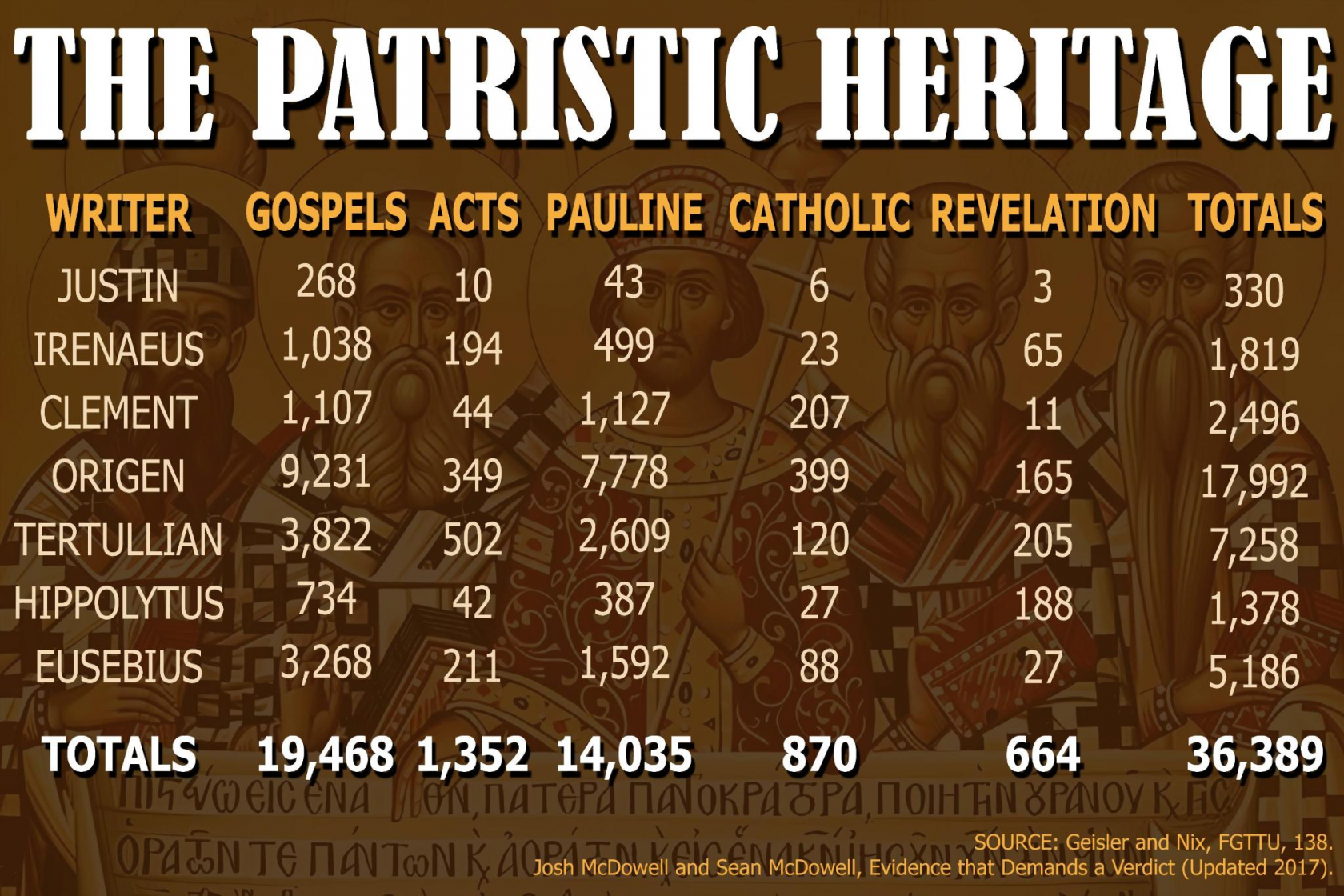
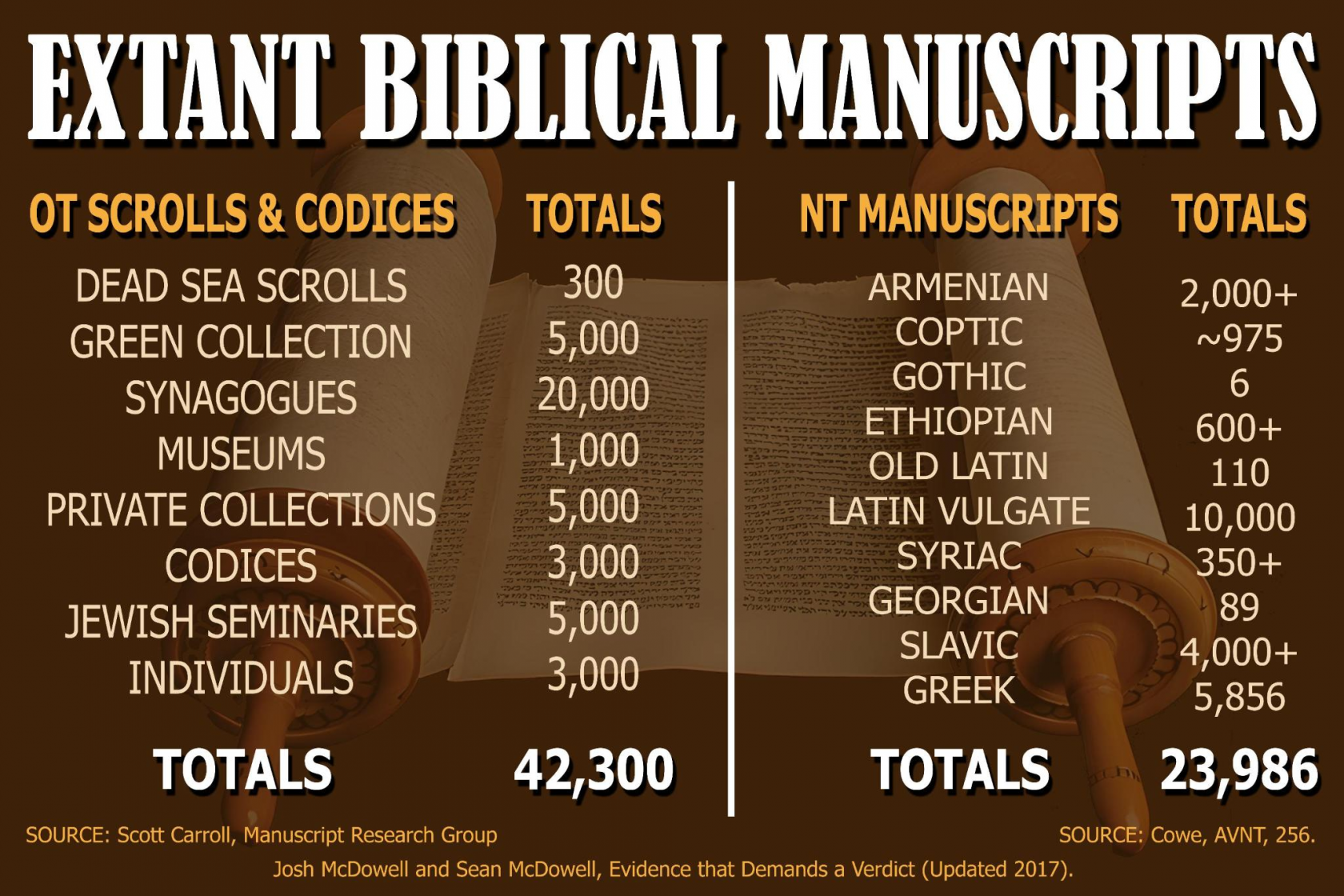
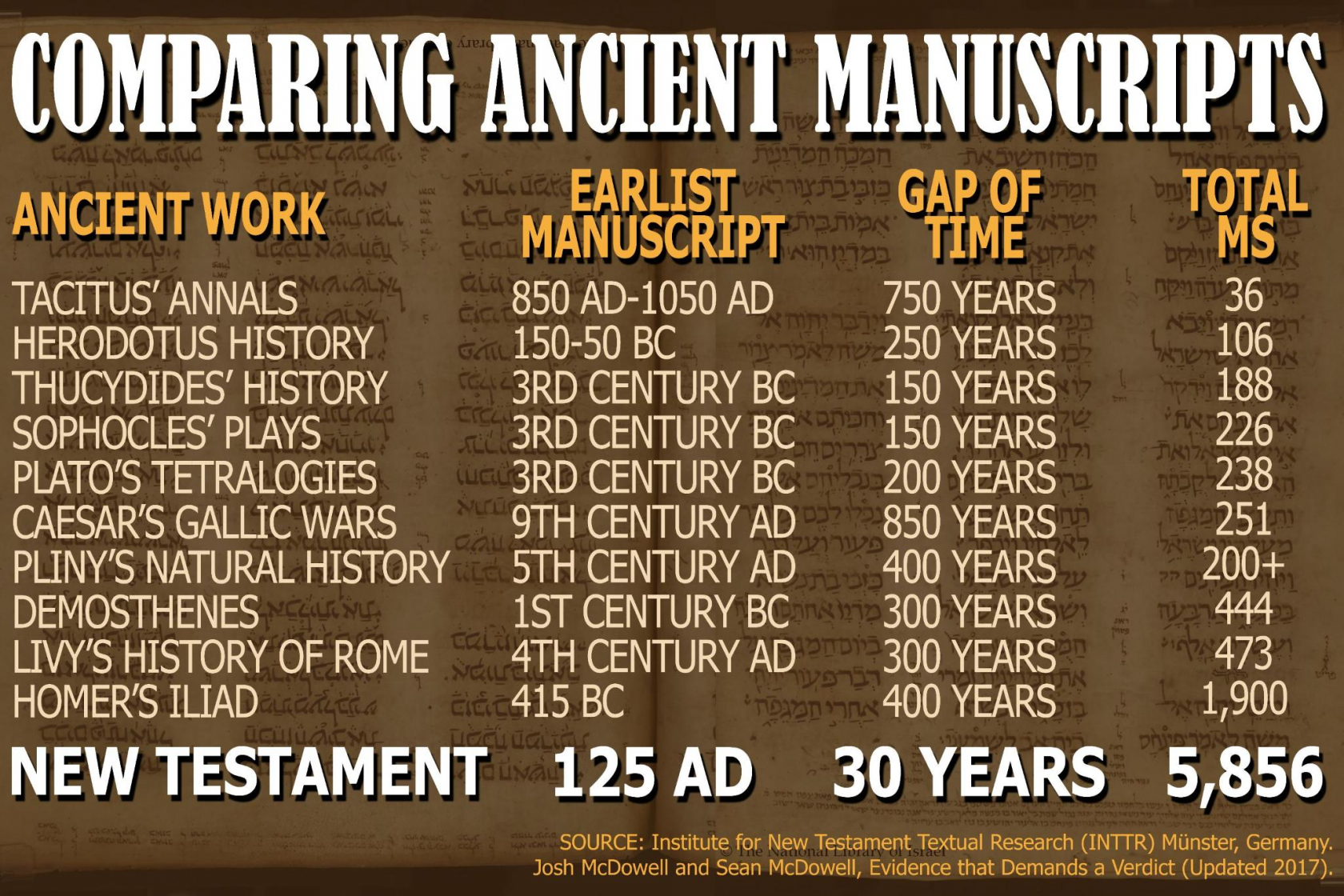
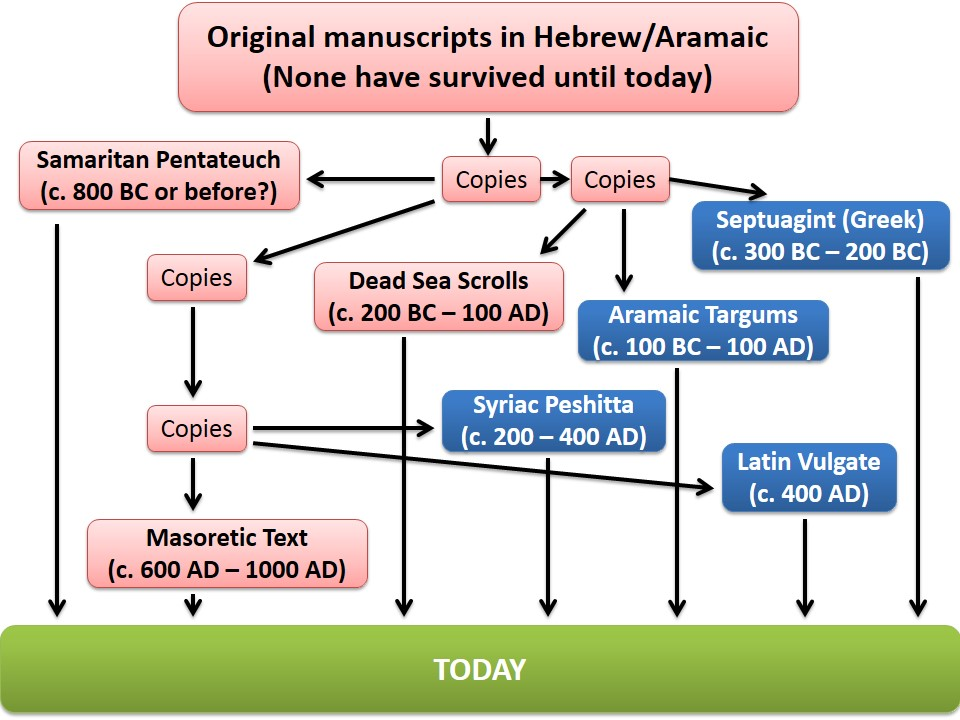
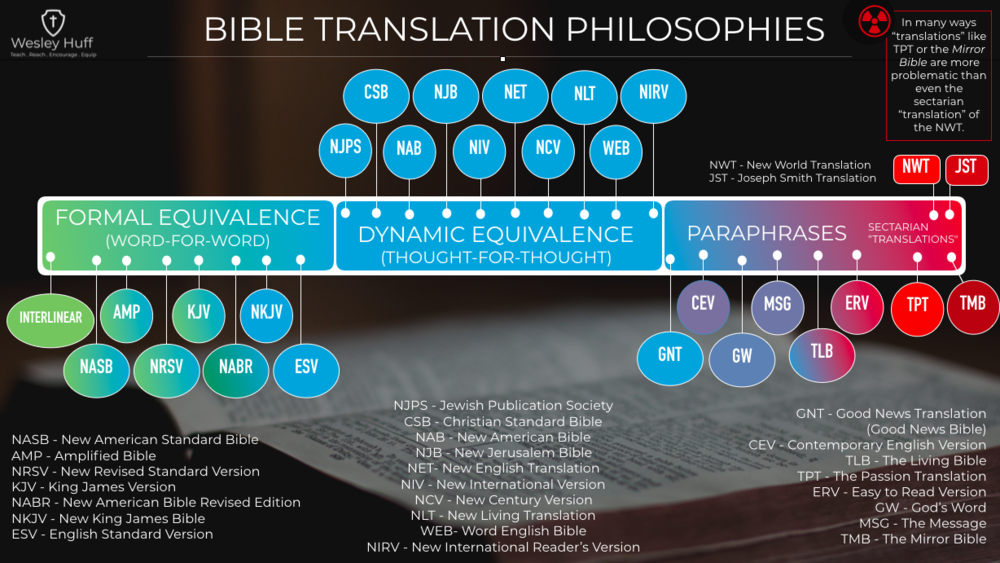
No Comments